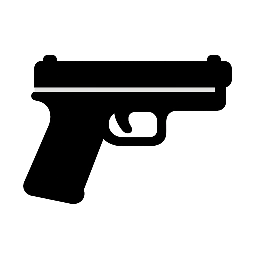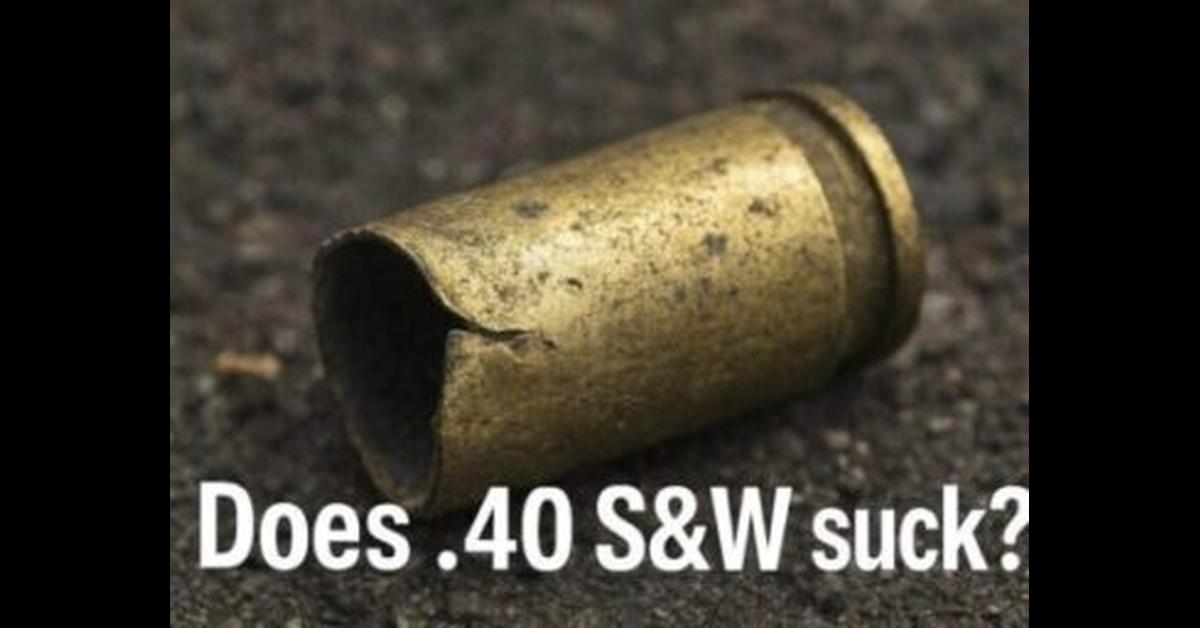Once hailed as the perfect medium between the 9mm and the 45ACP, the .40 S&W is now largely abandoned by law enforcement, disdained by many, and collecting dust in gun store display cases and home owner’s gun safes. But why? How bad could they be?
My 40 Experience
I remember buying my first handgun at 21 years old. I didn’t know much, but I knew Glocks were well regarded. I walked into a gun store, saw a Glock 23 chambered in .40 S&W, and said, “That one.”
Shooting it for the first time was an eye-opener—the recoil was snappy, the muzzle flip obnoxious. I eventually bought a 9mm conversion barrel just to tame the thing. That helped, but I still had the occasional malfunction. Later, I ditched Glock altogether for 1911s, concluding that 1911s are better.
I know now that I was wrong. Glocks don’t suck. I’ve come full circle—I’m a Glock fan and a die-hard 9mm fan. The real issue was the cartridge itself. My first handgun experience was ruined by the horrible .40 S&W.
Why So Many People Fall Into the .40 S&W Trap
After working in gun sales for nearly a decade, I’ve heard this same story play out time and time again.
A new shooter walks in wanting “stopping power.” They’ve been told that the 9mm is underpowered and inadequate – a government compromise for our gender confused military and budget-strapped police. The solution? The .40 S&W.
The .40 S&W shoots bigger bullets, with high energy’s, comparable capacity, and most important – it has more “stopping power”.
But if that is the case…
- Why are there so many secondhand 40s for sale?
- Why are they so cheap?
- Why are so many manufacturers discontinuing their 40 models?
- Why are so many Police Officers carrying 9mm?
The Origins Of The 40 S&W
Following several high-profile shootings, notably the 1986 FBI Miami Shootout, the FBI adopted the Smith & Wesson 1076 chambered in the 10mm Auto. However, after seeing agent’s scores drop significantly, the FBI determined they needed something milder than the 10mm.
Smith & Wesson observed that they could reduce the dimensions of the 10mm cartridge and make the cartridge fit a 9mm sized handgun. S&W successfully created the cartridge which resulted in the .40 S&W.
Glock beat S&W to market with the Glock 22 and 23, and once the 1994 Assault Weapons Ban imposed magazine capacity limits, the .40 S&W made sense on paper—more energy per round, similar capacity, and comparable trajectory to 9mm.
So what happened?
The Slow Death Of The .40 S&W
Today, the reality is that the .40S&W is dying a slow death.
Support is fading because the 9mm has caught up – and even surpassed the 40 S&W in some key metrics.
While improvements in bullet and propellant technology has improved all calibers, the 9mm has arguably received the greatest gains as a result of these improvements. In both FBI and independent testing, modern 9mm duty and defensive loads are matching and even exceeding 40 performances. Wound tracks in ballistic gel and even in real life wounds are virtually indistinguishable.
If bullet and propellant improvements had helped the .40 S&W as much as the 9mm, you’d expect the .40 to retain its edge. It hasn’t. The performance gap has closed, but the downsides of .40 S&W—recoil, wear, slower follow-up shots—haven’t gone away.
To put it simply, the 9mm has several advantages:
- In some models it enjoys higher capacity magazines
- Less recoil and faster follow up shots
- Cheaper ammo
- Easier for new shooters
- Reduced maintenance
- Some and likely better performance defensively|
The FBI: The Final Nail In The Coffin
In 2014, the FBI released a now-famous reports from its Training Division The reports quite bluntly stated that the 9mm, not the .40 S&W, would be the best choice for law enforcement. The FBI’s key points are:
- Handgun “stopping power” is a myth.
- Most “common knowledge” of ammunition and its effects on human targets are not true.
- The single most important factor in effectively wounding a human target is sufficient penetration depth of the wound track.
- Certain 9mm cartridges are outperforming most 40 S&W and 45 Auto cartridges per FBI testing.
- 9mm offers higher magazine capacities, less recoil, reduced shooter fatigue, greater accuracy, and higher functional reliability rates.
- Law Enforcement miss approximately 70% to 80% of shots fired.
FBI shooters are both faster and more accurate when firing a 9mm handgun
The Real Problem With The .40 S&W
New shooters often fall into the trap of chasing numbers – more power, more accessories, more “stopping power”. The problem is that none of these make you a better shooter.
Greater recoil, greater muzzle flip, greater pressures all come with high costs, which for most shooters is reduced performance.
The fact is, only the elite tier of shooters can run a 40 as well as a 9mm. Everyone else, they are going to shoot slower with less accuracy and fatigue faster with the .40 S&W. And even if you are an elite shooter, what are you actually gaining?
It has been said that the .40 S&W feels as though it was designed by a committee. The committee wanted something like a 9mm but bigger, and something that was like a 45 Auto but faster. The committee received a 10mm Auto and responded they want something like a 10mm but isn’t, and for that they received the .40 S&W.
The .40 S&W is the result of a very narrow goal, to fit a strict cartridge solicitation contract by a large, single law enforcement agency to overcome the challenges of a single shootout that happened in the mid-80s.
Final Thoughts
The 40 S&W is the middle manager of handgun cartridges – it goes around trying to please everyone standing out to no one.
It was built for a specific agency, for a specific time to win a single contract. Today it simply offers no clear advantage over modern 9mm defensive and duty loads.
For new shooters it is unquestionably an awful choice.
For experience shooters, it offers little – if anything at all.
For government work, it has largely been abandoned.
I hated the 40 S&W since I first bought into it all those years ago. I quickly moved on and everything I’ve learned since appears to have reinforced why I was right to move on.
The .40 S&W was a solution to a problem that can now certainly be solved by the 9mm, thus the problem doesn’t exist anymore. Today, it is just a snappy, outdated round that is slowly dying.
And that is why I think the .40 S&W sucks.


Leave a Reply